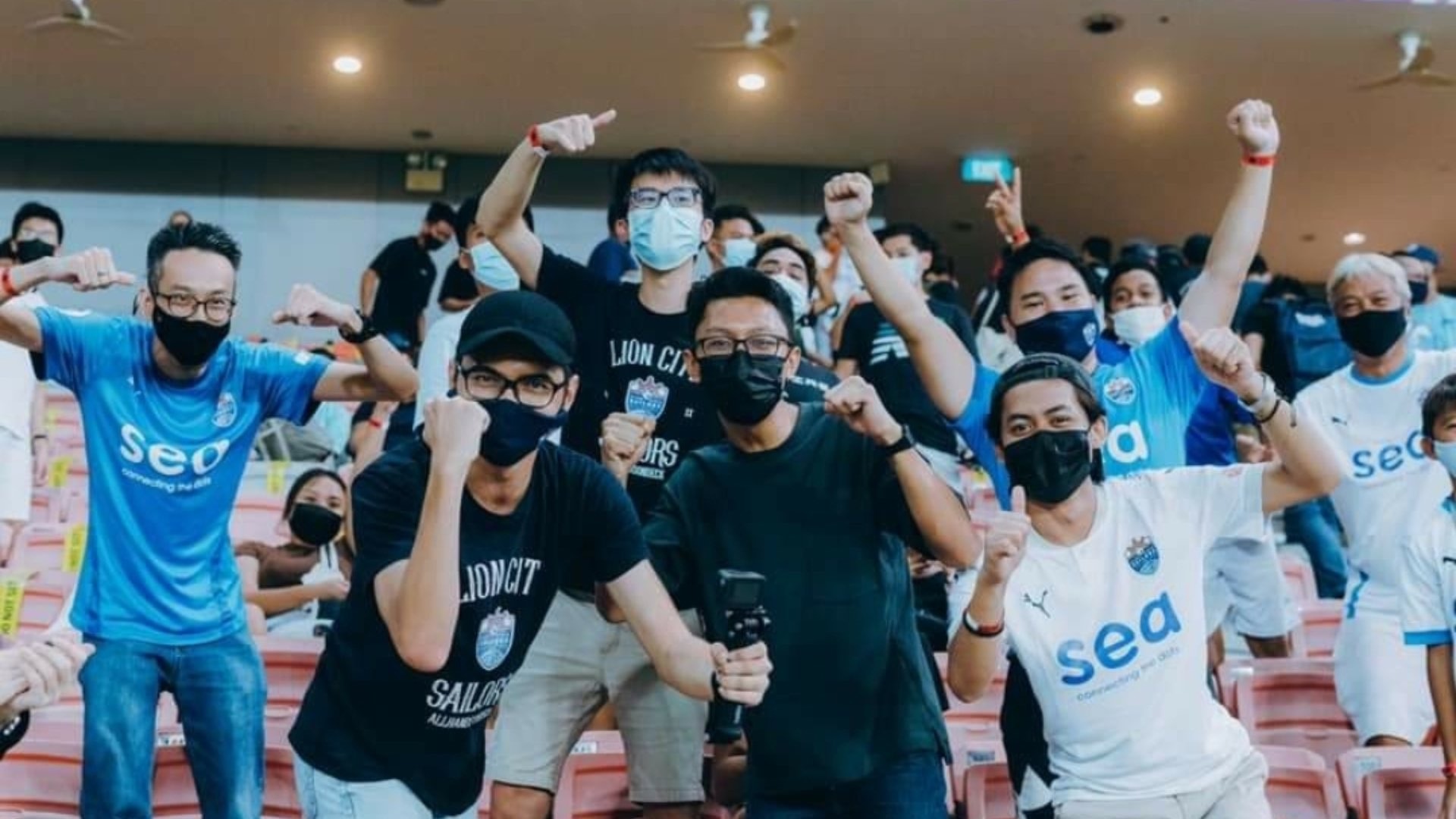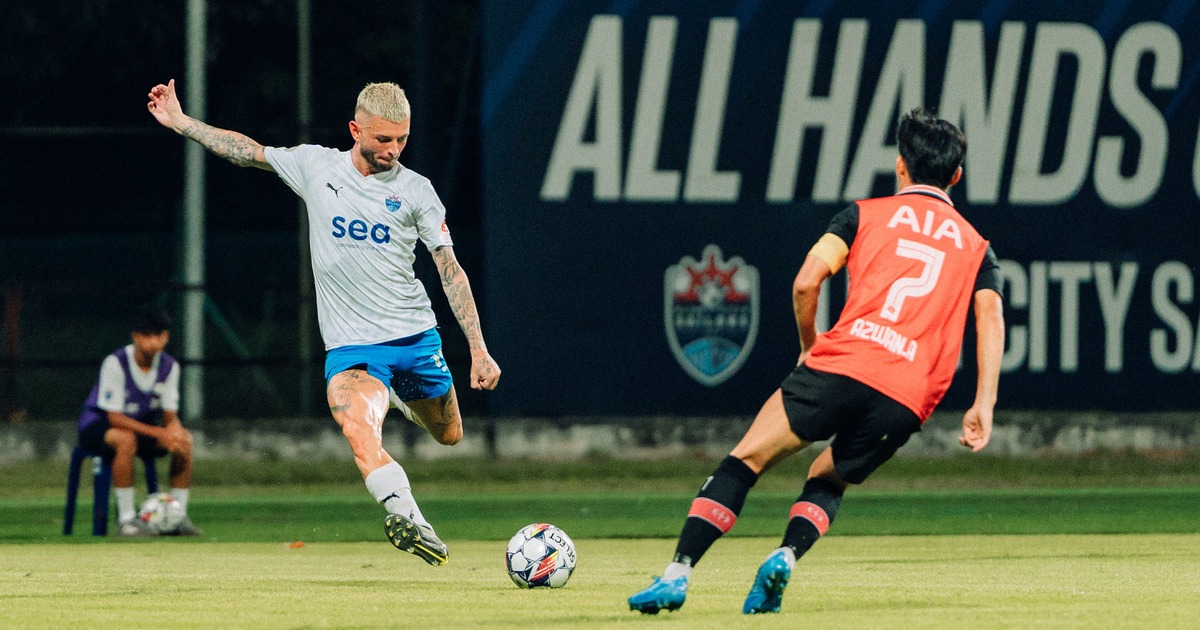Will Singapore be Asia’s next breakthrough football success story?
Last month, mostly out of sporting curiosity, I turned up for the two biggest games in the Singaporean football season. The contrast between them tells you a lot about the strange but far-from-hopeless state of the nation’s relationship with the sport.
At Bishan Stadium, the Lion City Sailors made a valiant attempt to vanquish Emirati team Sharjah in the final of the Asian Champions League Two, the continental equivalent of the Europa League. It was an exercise in footballing fervour – Sailors may not pack the crowds in for their domestic matches but this was a 10,000 sellout, every spectator furnished with a free songsheet, pennant and poncho, the latter to fend off a downpour that had drenched the ground in the hour before kick-off. The stadium, pressed into action when Sharjah objected to playing on an artificial pitch, had been transformed with three giant temporary stands, erected in just 10 days. The game had been marketed on every conceivable digital channel, and many of those who turned up were clearly first-time visitors to the Sailors and possibly to the domestic game.

Two weeks later, the Singapore Cup Final, where the Sailors completed a domestic double by beating nearest Singapore Premier League rivals Tampines Rovers, was seen by a crowd little more than a quarter of the ACL final. The second leg of the semi-finals had been played just three days previously thanks to scheduling issues. Getting a ticket in advance (though clearly not necessary), or even confirming kick-off time, required a reasonable degree of internet sleuthing.
On the face of it, Singapore has many of the ingredients that ought to make for what the marketers call a hotbed of football. A young, relatively affluent population, a love of the European game (Liverpool, Real and, increasingly, Newcastle shirts are a familiar sight on the streets), a rich history as one of Asia’s oldest leagues, a compact, easily navigable environment (no days-long away trips here) and a healthy infrastructure of youth teams should offer an in-built advantage.
Yet unusually for a city which likes to pick sectors and throw money at them until it succeeds, when it comes to football Singapore has never quite cracked it. Historically, that’s been down to resources: government patronage meant clubs, while technically private entities, were reliant on centrally disbursed funds for the majority of their income. For the first 20-odd years of the SPL (or S-League, as some prefer), that meant Singapore was a haven for never-quite-made-it lower league British players, second-rate Thais or Malaysians and a smattering of promising local youngsters.
The games were competitive, the quality was woefully lacking. What changed was former champions Home United being fully privatised and rebranded as the Sailors in 2019 by the city’s pre-eminent digital entrepreneur, Forrest Li, founder of the Sea conglomerate. Under veteran Australian coach Aurelio Vidmar, they began importing younger European players, though it took them until 2023, with Vidmar replaced by Serbian Aleksandar Ranković, to lift their first title.
If the aim of the move was to initiate a trickle-down effect on the rest of the SPL, it’s been a partial success. Sailors play some thrilling football (as expansive and pacy as you can get in 80% humidity). Bart Ramselaar, a full Dutch international still the right side of 30, has lit up the league, his mazy running and curling shots reminiscent of compatriot Arjen Robben. Australian international Bailey Wright was playing in the Championship a couple of years ago, while Lennart Thy scored 22 goals in 19 league games.
But it hasn’t done much to lift the overall experience of following the league. With weeks left to play and Sailors all but assured of the title – local media was busy talking up the race for fourth place, which carries with it no discernible prize whatsoever – a general election was called and all matches were rescheduled to be played in the Tampines Hub stadium in the far north of the city, with other grounds required for political events.
It just added to the sense that the SPL is an afterthought: matches are barely marketed, the Straits Times devotes less space to the league than it does to La Liga and the Singapore FA website often doesn’t have accurate fixture information (the SPL does, incongruously, have a full VAR system in operation). Few teams, Tampines Rovers aside, have a strong connection to an area of the city or even play an entire season at the same ground. The league’s numbers are made up by Brunei DPMM – essentially the Brunei national team, their local league having been disbanded by Fifa – who will at least be leaving for Malaysian climes next season.

Neither will the Sailors’ ascent do much to help the national team. Yes, it has generally raised standards and has ensured internationals are spread throughout the league. But Singapore’s real problem is its reluctance to naturalise South Americans in the way its Asian rivals have: half Malaysia’s starting XI are now dual nationals, while Singapore has South Korean-born Song Ui-Young and has been flirting for some years with the idea of handing Cardiff City defender Perry Ng a passport.
The hope must lie with Li. Many countries would baulk at making the owner of their biggest club the president of the Football Association but he is the only individual with the drive and the deep pockets to modernise the local game. Elected unopposed in April, he promised to “bring that joy and pride back to Singapore football” with “positive energy”, while acknowledging many had told him the task was impossible.
He must push Sailors forward on the continental scene – no Singaporean team has ever lifted a pan-Asian trophy – without leaving the rest of the league behind. He needs to bring the sort of innovation and dedication that characterise the local tech and financial services sectors to the problem of the league’s infrastructure, organisation and marketing, instead of leaving it to well-meaning amateurs. And I genuinely hope he manages it: there’s something endearing about the passion of those who do turn up for local games, with their manufactured songs (“all hands on deck until we die” runs one of the Sailors ultras’ ditties) and earnest dedication. Somehow, someone just needs to find a lot more of them, and quick.
Yes, I write about football too. Find out more on my bio page.
Post a comment